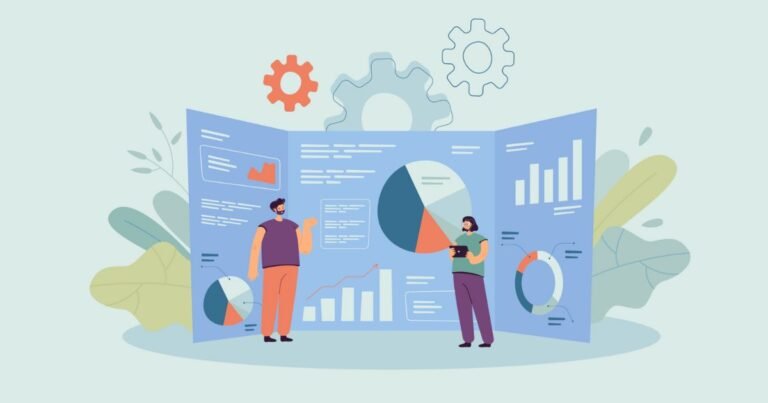During the last decade, small businesses have developed a remarkably different approach to payroll. As technology advances and workforce trends change, integrating time clocks and payroll systems has become essential for streamlining operations. The article discusses the key benefits of unifying time tracking and payroll for SMBs today.
Payroll Systems for Small and Medium Businesses: An Evolution
Traditionally, small and midsize businesses handled payroll manually, using pen and paper or spreadsheet software. Due to changes in regulations regarding taxes, overtime, and leave policies, payroll needs have become more complex. For compliance and to automate mathematical calculations, SMBs began adopting payroll software.
While most basic payroll software is standalone, it lacks seamless integration with other payroll and HR systems, such as time tracking, accounting, and benefits administration. Manual time logging using paper timesheets or even time clock calculators is still cumbersome can lead to redundant data entry across systems and increase errors. SMBs must stay on top of the latest trends in integrated payroll systems and payroll for startups to streamline operations.
A Look at the Impact of the Gig Economy on Payroll
A fundamental change has taken place in the payroll landscape as a result of the exponential growth of the gig economy. In 2008, there were only 15 million freelancers and contractors in the U.S. By 2020, that number had tripled to around 42 million. Payroll is no longer a monthly or biweekly batch process due to frequent job changes, remote work, and multiple income sources.
Complying with payroll taxes has also become more challenging as the number of contract workers increases. For freelancers, SMBs must handle additional forms like 1099-MISC and 1099-NEC instead of W-2s. It is also essential to stay current on varying state-specific labor laws, staggered payment frequencies, and tax rates. Integrating seamless systems is crucial for avoiding penalties and errors.
What are the Advantages of Cloud-Based Payroll Systems?
Payroll systems on the cloud were born out of problems integrating in-house servers and desktop software. It is safer for SMBs to store data on remote encrypted servers rather than on-site hardware. This allows secure access from anywhere via the web, eliminating the need to be physically present. Furthermore, cloud platforms receive automatic software updates, saving IT costs and eliminating the need for manual updates.
With cloud-based payroll systems, small businesses can pay only for the features they need and scale up or down as their business needs change. Additionally, they automatically update tax laws and labor regulations across different regions to ensure compliance. Over 70% of small businesses now use integrated cloud payroll services, according to industry surveys.
Other benefits of cloud payroll systems include seamless integration:
- SMBs save money by avoiding expensive servers and IT infrastructure for payroll processing. Subscription-based pricing allows for effective cash flow management.
- Employees can access their payroll information from home computers, smartphones, or tablets, request time off, or update personal information.
- A cloud-based system generates real-time reports and instant insights into labor costs, overtime expenses, tax payments, etc. You can also create custom reports.
- In case of a natural disaster or outage on local systems, payroll can continue to run smoothly on the cloud.
- Pay stubs, tax forms, receipts, and other payroll-related documents can be securely stored in the cloud, eliminating paper clutter.
- Mobile capabilities: Time tracking, pay slip viewing and approval processes can be handled on the go by employees via user-friendly mobile apps.
- Cloud platforms are regularly updated with new features, allowing SMBs to leverage the latest payroll technology trends.
With powerful capabilities like these, it is evident why most modern SMBs are rapidly adopting cloud-based payroll processing.
Automating Payroll with Artificial Intelligence
AI is transforming payroll in remarkable ways, from data organization to process automation. By reviewing hours, overtime, reimbursements, and other earnings data, advanced algorithms can identify discrepancies and prevent costly mistakes. As a result, manual audits and adjustments are reduced.
By answering employees’ common questions about pay dates, forms, taxes, etc., chatbots equipped with NLP ease the workload of HR departments. According to Forbes, 64% of businesses already believe AI can enhance productivity and accuracy significantly. Taking payroll operations to the next level can be achieved by integrating AI-driven tools like RPA, chatbots, and predictive analytics.
HR Integration in Payroll: Why It’s Important
Compliance for startups is important for your business to grow. Every business, including startups, is subject to a variety of legal and regulatory requirements. Keeping in compliance with the law and mitigating potential penalties is the purpose of compliance.
Payroll and HR data are both related to compensation, yet many businesses still handle them separately, leading to reconciliation problems. By integrating HR and payroll systems using cloud computing, employees’ master data can be accessed from one location. Salaries, new hires, terminations, and benefits enrollment can be seamlessly synced across HR, payroll, and accounting in real time.
SMBs identify payroll errors as a result of a lack of integration between related systems, according to leading surveys. Integrating HR and payroll improves compliance, accuracy, speed, and data analysis. Self-service access to pay stubs, tax documents, and other payroll information is also available to employees.
Future-Ready Payroll Providers
Leading cloud providers are evolving their payroll offerings to meet the growing demand for integration, automation, accessibility, and intelligence:
- Paychex – This provider offers a time and attendance system tightly integrated with its payroll software. Data syncing is seamless, salary calculations are real-time, and redundancies are reduced.
- OnPay integrates payroll, human resources, and benefits administration into one unified cloud platform. In addition, AI-assisted chatbots and simplified reporting are available.
- In Gusto, they offer users a “modern payroll experience” through user-friendly software, workflow automation, mobile access, and multidimensional data insights.
To meet the changing needs of modern payroll, each provider uses deep integration, intelligent features, and accessibility.
In Conclusion
SMBs must integrate time tracking and payroll systems to streamline operations in the gig economy, cloud platforms, and artificial intelligence. By unifying data across applications, managers and employees can improve compliance, productivity, accuracy, and accessibility. By integrating intelligence and integration capabilities, leading providers are enabling SMBs to optimize payroll processes. Time tracking and paying employees efficiently should be a top priority in today’s business environment.
To optimize payroll processes, evaluate your current payroll system and explore more advanced, integrated options. As a result of unifying systems, time and money are saved, compliance is improved, and data accuracy is improved.
Frequently Asked Questions
- In what ways do integrated payroll systems accommodate the needs of freelancers and gig workers?
Automated 1099 generation and easy tracking of contractor hours can be achieved with these programs. Remote work is made easier with features like mobile time capture.
- What are the primary benefits of shifting payroll processing to the cloud?
The main benefits include cost savings, unlimited data access from anywhere, and automatic software/tax regulation updates.
- What role does AI play in streamlining payroll and reducing errors?
Artificial intelligence automates data capture, identifies discrepancies through analytics, and provides 24/7 chatbot support. As a result, manual work is reduced and accuracy is improved.







